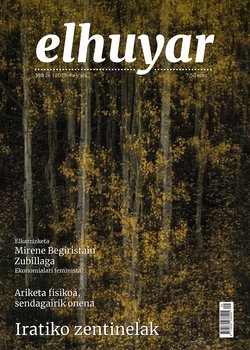New geological map; 5000 new marine species; trying to avoid HIV mutations; Warmest Decade
NEW GEOLOGICAL MAP The geological
map of the region of Piedras de Ia, Jaizkibel and Oarso has just been presented. It has a three-dimensional appearance that shows the geological and paleontological heritage of the region. The colorful map also presents landscapes and geological structures and gives an account of the fossil remains of animal plants in the region. The Geological Vision of Oiartzun, carried out in collaboration with Luberri and the Aranzadi Science Association, offers the possibility of going back 400 million years in geological history.
5000 NEW MARINE SPECIES
The Census of Life has found 5,000 new species. Among other things, they have discovered organisms that produce strange and colorful creatures and chemicals that can be used in medicine. Researchers have shown images of the most spectacular species found in ten years, including a crab that has received a new scientific designation. Two thousand scientists have participated in this project in the last ten years, and the final report will be presented in October.
A team of researchers at
the Research Institute of HIV has discovered two new compounds related to the way the AIDS virus mutates. As a result of the discovery, researchers hope to open new avenues to avoid mutations in the virus. According to the World Health Organization, 33 million people worldwide are currently infected with the AIDS virus.
Since the
beginning of the decade, 2000-2009 has been the warmest decade to date. This is the main conclusion of the surface temperature study conducted by NASA’s Goddar Institute. Similarly, 2009 was the second warmest year in history, after 2005, but it was the warmest year in the southern hemisphere. Over the past three decades, temperature measurements indicate an upward trend of 0.2 degrees per decade. Scientists agree that carbon dioxide and other greenhouse gases are the main culprits of the increase. Other factors contributing to the increase include changes in solar irradiation, temperature fluctuations in the tropic seas, and changes in the amount of particles carried by the wind.
Buletina
Bidali zure helbide elektronikoa eta jaso asteroko buletina zure sarrera-ontzian


